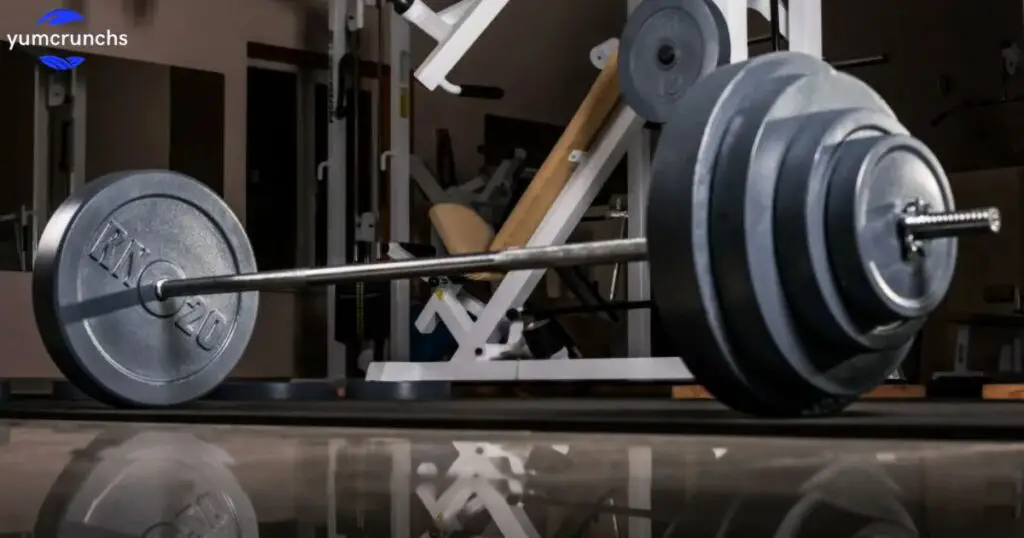When it comes to physical improvement, building muscle is often a top priority. The added muscle mass will increase your muscle definition, improve your lean body mass, and add size in all the right places. Muscle growth requires time, persistence, and a long-term commitment to the process.
While gaining large amounts of muscle may seem difficult, with proper training programs and adequate consumption of certain foods, serious muscle building is possible for most people. This article breaks down everything you need to know about building muscle, including how to work out, what to eat, and recovery protocols.
The Basics of Building Muscle
Anatomically, skeletal muscles are a series of parallel cylindrical fibers that contract to generate force. This muscle contraction allows all external human movement to occur. Your body is in a constant process of renewing and recycling the amino acids, or protein building blocks, in your muscles. If your body removes more protein than it adds, you will lose muscle. If net protein synthesis is even, there is no measurable change in muscle size.
Finally, if your body stores more protein than it removes, your muscles will grow. The key to building muscle is to increase the rate of protein synthesis while decreasing the rate of protein breakdown. This process of increasing your muscles is known as muscle hypertrophy, and it is the primary goal of resistance training. The process of building muscle is stimulated by several factors, including hormones such as testosterone and growth hormone as well as the availability of amino acids and other nutrients.
To build new muscle tissue, your primary tools for increasing your body’s rate of protein synthesis are resistance training and getting adequate amounts of protein and overall nutrients. The right amount of resistance training stimulates your body’s hormonal response to build muscle, but it requires the availability of adequate protein and energy to ensure that the process results in muscle mass without the risk of Food Poisoning. Here is a gain of muscle as opposed to a loss. While researchers and experts continue to study the science of optimizing muscle gains, resistance training using moderate to heavy loads, combined with relatively high protein intake, remains the only tried-and-true training method for increasing muscle mass.
Train Smarter, Not Harder: Optimal Muscle-Building Techniques

While commitment and trouble are incontrovertibly pivotal, achieving success in structure muscle depends on enforcing effective training methodologies. The companion handed
Bywellhealthorganic.com introduces an important mix of emulsion exercises, insulation movements, and the vital principle of progressive load. Emulsion exercises, similar as syllables, deadlifts, and bench presses, spark multiple muscle groups coincidently, fostering functional strength and initiating overall muscle development. On the negative, insulation movements concentrate on specific muscles,
Enabling targeted improvement and refinement of asked regions. Yet, the real motorist for continual muscle growth lies in the principle of progressive load. By gradationally raising the intensity, volume, or resistance in your exercises over time, you impel your muscles to acclimatize and come stronger, fending off mesas and icing harmonious advancement.
Tips to Gain Muscle
While many types of exercise provide health benefits, the only way to reliably drive muscle growth is to exercise your muscles against moderate to heavy resistance. Furthermore, muscle growth is specific to the muscles being used.
1. Choose the right amount of weight

In all cases, the weight should be heavy enough that it is impossible to perform more than 20 reps. the weight you use should drop to or near failure in the number of repetitions, you specify. For example, if you are doing a set of 10 repetitions, by the tenth repetition, you should be unable or almost unable to perform another repetition.
If your goal is building muscle, you should rarely exceed “two reps in the tank” by the end of the set. The overall implication of the repetition range continuum is that you should go through different phases of training using different repetition ranges to see what gives your body the most muscle growth.
2. Choose your exercises well
As mentioned, building muscle is specific to muscle function. For example, to build bigger biceps, you need to do exercises that work the biceps. This can be an isolated biceps exercise, such as a biceps curl, or a compound movement that uses the biceps, such as a pull-up. In terms of the best exercise types for building muscle, compound and isolation movements can be equally effective in producing muscle hypertrophy. Still, for the best long-term fitness results, you should incorporate both compound and isolation movements into your training. Compound movements like a barbell back squat effectively stimulate multiple large muscle groups in a single exercise and Provide more functional movement for real life activities.
This is a more efficient workout and more Practical muscle strength leads to both. Isolation movements are a great way to target specific muscles, and beginners may initially find them safer and easier to learn than compound movements. Additionally, it is easier to perform isolation movements when you are tired, because you are able to stabilize your entire body. Are not doing. This can allow you to do a few extra-targeted sets at the end of the workout when you would otherwise be too tired to perform another compound exercise.
3. Structure your workouts to avoid overtraining
A good rule of thumb is to do three sets of 3-5 compound movements, followed by 3 sets of 1-2 isolation movements per workout. Typically, you perform your heaviest sets using compound movements and perform higher repetition ranges on your isolation movements. Assuming you’re doing three work sets per exercise, limit your
Total joint compound and isolation movement exercises to 5-7 movements per workout. This allows you to benefit from each type of exercise while maximizing the overall muscle-building potential of your training program and avoiding any symptoms of over-training. However, it’s crucial to be aware of the potential Bad Side Effects of Muscle Building Supplements when incorporating them into your routine.
The Vital Role of Nutrition in Muscle Building

Analogous to how a high-performance machine relies on top-quality energy, your body needs a harmonious input of vital nutrients to ease muscle growth. Proper nutrition serves as the foundation of any successful muscle-structure routine, and the companion handed bywellhealthorganic.com underscores the significance of maintaining a well-rounded diet abundant in
Lean proteins:
Lean proteins are a type of protein that is low in fat and calories, making them a healthy choice for those looking to maintain or lose weight. These proteins are derived from sources such as poultry, fish, legumes, and certain cuts of red meat. Consuming lean proteins can help you feel full and satisfied, while also providing essential amino acids that your body needs for muscle growth and repair. Incorporating lean proteins into your diet can be a great way to support an active lifestyle and promote overall health and wellness.
Complex carbohydrates
Complex carbohydrates are a crucial component of a well-balanced diet, particularly for those seeking to build muscle. These carbohydrates are composed of longer chains of sugar molecules, which take longer to digest and provide a more sustained release of energy. This makes them an ideal choice for athletes and individuals engaging in regular physical activity, as they help to maintain energy levels and support muscle growth.
Healthy fats

play a crucial role in building muscle by providing energy and supporting hormone levels. They also help in the absorption of essential vitamins and minerals, which are vital for muscle growth. Consuming a balanced diet that includes healthy fats such as avocados, nuts, and olive oil can support muscle growth and overall health.
Vitamins and minerals
To build muscle effectively, ensure your diet includes essential vitamins like Vitamin D, which aids in muscle function and growth, and Vitamin C, crucial for collagen synthesis. Additionally, minerals like magnesium play a key role in muscle contractions and protein synthesis, supporting muscle development and recovery. Incorporating a balanced intake of these vitamins and minerals can optimize muscle-building efforts alongside a proper exercise routine.
Rest and Recuperate: The Often-Overlooked Key to Muscle Growth
Rest and recuperation are often overlooked for muscle growth, but they are essential. While intense workouts and high-protein diets are important, sufficient rest is equally crucial. During resistance training, muscles develop microscopic tears that need time to repair and grow stronger. Without proper rest, gains are limited, and the risk of injury increases.
Rest is not only physical but also mental rejuvenation. Intense training can lead to burnout and decreased motivation, so taking regular breaks is necessary for long-term success. Prioritizing rest alongside workouts and nutrition is key to unlocking the full potential of muscle growth and overall well-being.
How do muscles know when to grow?
Sure, I can break it down for you. Muscles grow in response to certain signals from your body. Here’s a simplified explanation:
Exercise and Stress: When you lift weights or do other kinds of exercise, you’re putting stress on your muscles. This stress causes tiny tears in the muscle fibers
Repair Process: Your body notices these tears and starts a repair process. It sends special cells called satellite cells to the damaged muscles.
Protein Synthesis: These satellite cells then multiply and fuse to the muscle fibers. They help in repairing and rebuilding the muscle fibers. This process is called protein synthesis.
Nutrition: To help with this repair and growth, your body needs the right nutrients, especially protein. Protein provides the building blocks your body uses to repair and grow muscles.
Rest and Recovery: After exercise, your muscles need time to rest and recover. This is when the repair and growth process happens. So, it’s important to give your muscles enough rest between workouts.
Hormones: Hormones also play a role in muscle growth. For example, testosterone, which is present in both males and females but in different amounts, helps stimulate muscle growth.
Progressive Overload: To continue growing, your muscles need to be challenged. This means gradually increasing the weight you lift or the intensity of your workouts over time. This principle is called progressive overload.
So, in simple terms, muscles grow when they’re stressed through exercise, repaired through protein synthesis, fueled by proper nutrition, and given enough rest to recover. Hormones and progressive overload also play important roles in the muscle growth process.
how to build muscle naturally

Building muscle naturally doesn’t have to be complicated. With the right approach and consistency, anyone can achieve their muscle-building goals. Here are some important tips to help you get started:
- Eat Protein-Rich Foods: Protein is essential for muscle growth. Include sources like chicken, eggs, fish, beans, and nuts in your diet. Aim to consume protein with each meal to support muscle repair and growth.
- Fuel Your Workouts: Eat a balanced meal containing carbohydrates and protein about 1-2 hours before your workout. Carbs provide energy for your training sessions, while protein helps with muscle repair and growth.
- Strength Training: Incorporate strength training exercises into your routine at least 2-3 times per week. Focus on compound movements like squats, deadlifts, bench presses, and rows, as these work multiple muscle groups simultaneously.
- Progressive Overload: Gradually increase the intensity of your workouts over time. This could mean lifting heavier weights, doing more repetitions, or reducing rest periods between sets. Progressive overload is crucial for stimulating muscle growth.
- Get Enough Rest: Rest is essential for muscle recovery and growth. Aim for 7-9 hours of quality sleep each night to allow your muscles to repair and grow. Additionally, give your muscles time to rest between workouts to prevent overtraining.
- Stay Hydrated: Drink plenty of water throughout the day to stay hydrated. Dehydration can negatively impact your performance in the gym and hinder muscle growth.
- Eat Frequently: Instead of three large meals, aim to eat smaller, more frequent meals throughout the day. This keeps your energy levels stable and provides a steady supply of nutrients to support muscle growth.
- Limit Processed Foods: Minimize your intake of processed foods, sugary snacks, and sodas. These can contribute to weight gain and hinder your progress in building lean muscle.
- Be Patient and Consistent: Building muscle naturally takes time and consistency. Stay dedicated to your workouts and nutrition plan, and be patient with your progress. Results won’t happen overnight, but with persistence, you’ll see improvements over time.
- Listen to Your Body: Pay attention to how your body responds to your workouts and adjust accordingly. If you’re feeling excessively fatigued or experiencing pain, it’s important to take a step back and rest. Overtraining can hinder progress and increase the risk of injury.
By following these tips and staying committed to your goals, you can build muscle naturally and achieve the results you desire. Remember, consistency is key, so stick with it and celebrate your progress along the way!
What is the best way to train for muscle growth?
1. Strength Training:
The best way to grow muscles is through strength training exercises like lifting weights or using resistance bands. These exercises make your muscles work harder, which helps them grow bigger and stronger.
2. Progressive Overload:
To keep building muscle, you need to gradually increase the challenge of your workouts. This means lifting heavier weights or doing more reps over time. It’s like leveling up in a video game – you need to keep pushing yourself to see results.
3. Compound Exercises:
Focus on compound exercises that work multiple muscle groups at once, like squats, deadlifts, bench presses, and pull-ups. These exercises are more efficient because they target several muscles at once, helping you build overall strength and size.
4. Rest and Recovery:
Muscles grow when you rest, not when you’re working out. Make sure to give your muscles time to recover between workouts. Aim for at least 48 hours of rest for each muscle group before working them again.
5. Nutrition:
Eating the right foods is crucial for muscle growth. Make sure to get enough protein in your diet, as it provides the building blocks your muscles need to repair and grow. Also, eat plenty of fruits, vegetables, and whole grains to fuel your workouts and support overall health.
6. Consistency:
Building muscle takes time and consistency. Aim to work out regularly, at least 3-4 times per week, and stick to your routine. Consistent effort over time is key to seeing progress.
Remember, everyone’s body is different, so what works for one person may not work for another. Listen to your body, adjust your workouts as needed, and be patient – muscle growth doesn’t happen overnight!
Muscle Growth: The Science Behind Bulking Up

Anyone looking to ameliorate their overall physical fitness and looks should prioritize erecting strong muscles. Structure muscle improves one’s general good in addition to boosting confidence. By clinging to effective, natural styles for muscle growth outlined in estimable health coffers, individualities can achieve these pretensions.
Commencing the trip toward erecting robust muscles entails harmonious exercise, consumption of nutritional organic foods rich in proteins, and engaging in toning conditioning. While adding the frequency of introductory exercises, lifting weights, and clinging to a protein-rich diet can enhance strength, genuine muscle development requires pushing one’s muscles past their limits and allowing acceptable time for recovery and growth. It is imperative to ensure that exercises are targeted and effective, fastening on the specific muscles you aim to strengthen.
Failure to witness progress in muscle development may stem from inconsistency in training or failure to cleave to proper health guidelines conducive to natural muscle growth. In the forthcoming discussion, we will share precious perceptivity to expedite the process of muscle structure.
FAQ’s
How to gain muscle quickly?
To gain muscle quickly, prioritize progressive training, protein intake, and adequate rest.
What is the key to gaining muscle?
The key to gaining muscle is a combination of progressive resistance training, proper nutrition, and adequate rest for recovery.
How to increase muscle mass for females
Tailored strength training combined with balanced nutrition fosters optimal muscle growth in women.
Conclusion
In conclusion, building muscles requires dedication and consistency. By following these tips to increase muscle mass, you can achieve your fitness goals. Remember to focus on compound exercises, prioritize proper nutrition, get enough rest, and stay hydrated. Your journey to a stronger, more muscular body starts with small steps and builds over time.
Think about how each tip fits into your routine. Are there adjustments you can make to optimize your workouts and nutrition? Reflect on your progress regularly and adjust accordingly. With patience and perseverance, you’ll see results that will motivate you to keep going. Keep pushing yourself, stay disciplined, and trust in the process. Your dedication will pay off, and soon you’ll be amazed at the progress you’ve made. So, what changes will you implement today to get one step closer to your ideal physique?

Daniel, a seasoned author with 8 years of expertise in SEO, brings a delectable blend of culinary flair and digital finesse to the food niche on his website.



